I have not had the opportunity to explore the older parts of Kuala Lumpur although I have been living here for the past six years. The story of city is hidden in the buildings and roads that are now overshadowed by modern skyscrapers and monstrous structures. Bit by bit, the historical and cultural significance of what made Kuala Lumpur the city it is today is being chipped away in the name of progress and development.
Rakan KL, a people’s movement to preserve the heritage of Kuala Lumpur have been organising activities and walkabouts around the historical parts of the city. Wuan and I participated in the Merdeka Walk 2 lead by Victor Chin last Saturday. It was to begin from Tun Shin Hospital at Jalan Pudu and end at the Chin Woo Stadium at Jalan Hang Jebat.
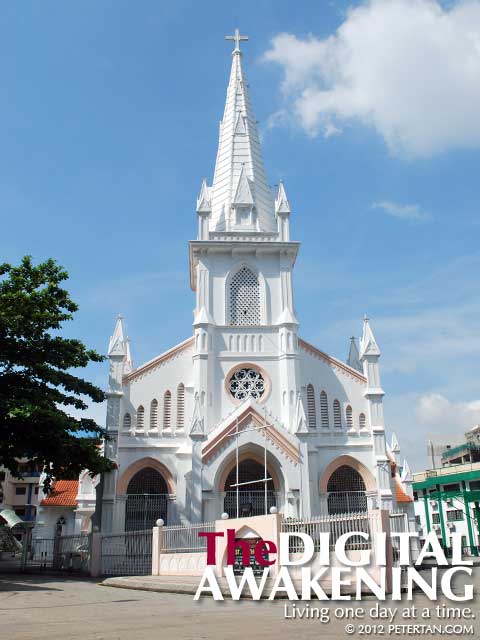
Church of St. Anthony at Jalan Robertson, Pudu, Kuala Lumpur.
We decided to park our car at the Church of St. Anthony and waited to join the group there as most of the locations in the walkabout are on that side of the road. The last time I prayed the Mass here was in 2005 when the church was being refurbished. Mass was celebrated at the Dewan Dominic of the Kuala Lumpur Archdiocesan Pastoral Centre which is just behind the church then.
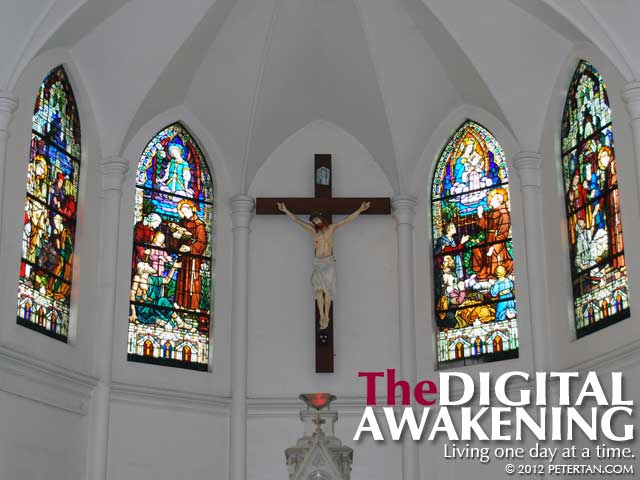
Beautiful stained glass windows behind the altar at the Church of St. Anthony in Kuala Lumpur.
The Church of St. Anthony was built in 1911. The magnificent whitewashed facade with its tall spire rose all the way up to the sky. Surprisingly, I could easily enter from the side entrance. The crucifix above the main altar is flanked by two beautiful stained glass windows on each side. Despite the blistering heat outside, the high ceiling kept the air cool inside. As I sat there taking in holiness of the ambience, a soothing calm came over me. It has been a long while since I felt the Grace of God flowing in me.
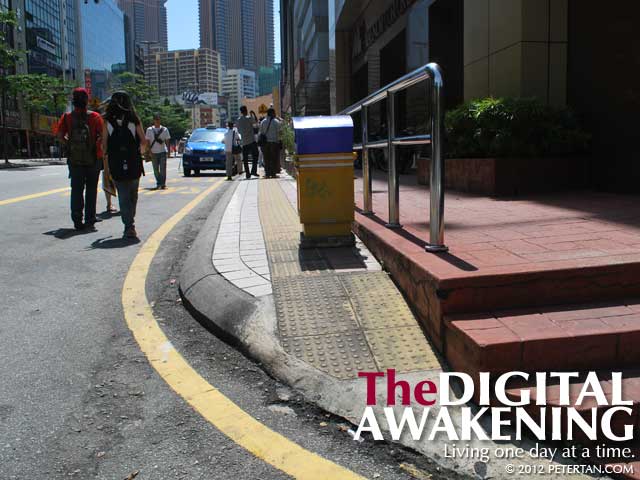
Sidewalk outside Magnum House in Jalan Pudu, Kuala Lumpur.
From the church, we made our way to the disused car showroom at the junction of Jalan Robertson and Jalan Pudu. The sidewalk, although paved with tactile guide path, had a poorly done kerb ramp that was steep and dangerous for wheelchair users even with assistance. That was a glaring example of doing for the sake of doing without taking into consideration if the facility was useful or not. Making a kerb ramp does not make the sidewalk accessible if they do not conform to accessibility standards.
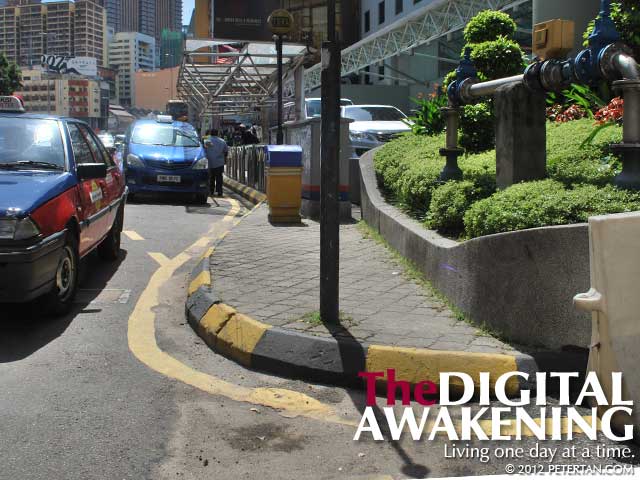
Taxi stand outside Swiss Garden Hotel, Jalan Pudu, Kuala Lumpur.
All along the way onwards, the kerb ramps were too dangerous to be used or were obstructed by street furniture. Whoever built these sidewalks, Dewan Bandaraya Kuala Lumpur (DBKL) must be faulted for not ensuring that they adhered to Malaysian Standard MS 1184: Code of Practice for Access for Disabled Persons to Buildings and Malaysian Standard MS 1331: Code of Practice for Access of Disabled Persons Outside Buildings.
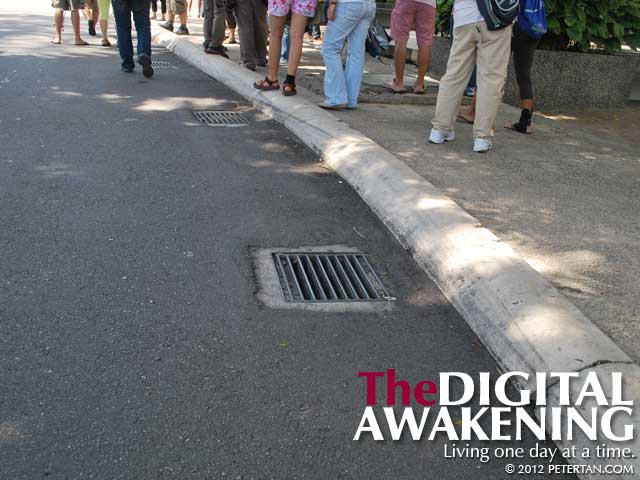
These drain grates along Jalan Galloway may trap wheelchair casters and throw the wheelchair user off the chair.
With the sidewalks practically inaccessible, I had to go on the road most of the time while speeding vehicles whizzed by. Drain grates with the grilles running parallel to the road can potentially trap wheelchair casters and throw the user off the wheelchair. The grates are dangerous to cyclists as well. To avoid these grates, I had to go further out on the road to brave oncoming traffic. Fortunately, Felix Kusmanto, a friend from many years ago walked ahead of us to direct traffic away from me. Still, these are the dangers that wheelchair users have to contend with while out in the streets of Kuala Lumpur.
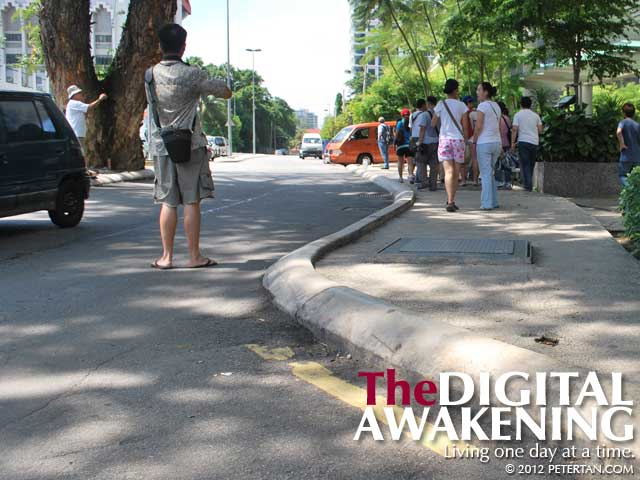
Felix directing traffic away from me. I had to get on the road and in the way of oncoming traffic because of the drain grates and inaccessible sidewalk.
The group took a breather under the shade of one of the houses at Jalan Sin Chew Kee. This road is lined with two rows of old houses which are priced over a million ringgit each. This quieter area is in sharp contrast against the busy Jalan Pudu which is just a stone’s throw away. Wuan and I had to abandon the walkabout and turn back here as the way to the other stops was fraught with barriers and other difficulties that made it a gargantuan task to traverse on a wheelchair.
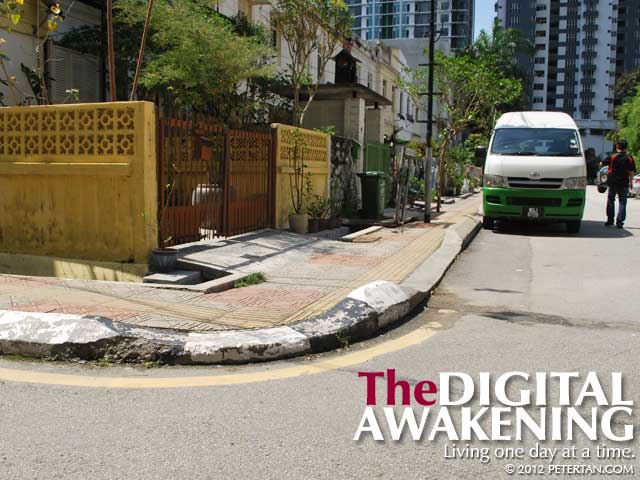
Jalan Sin Chew Kee is an oasis of calm in the hustle and bustle of Jalan Pudu in Kuala Lumpur.
We took the road between Swiss Garden Residences and Swiss Garden Hotel and came upon drain grates with grilles parallel to the road cut across the road. There was no avoiding it this time. Wuan had to push my wheelchair diagonally against the grates to avoid having my casters fall into the gaps between the grilles.
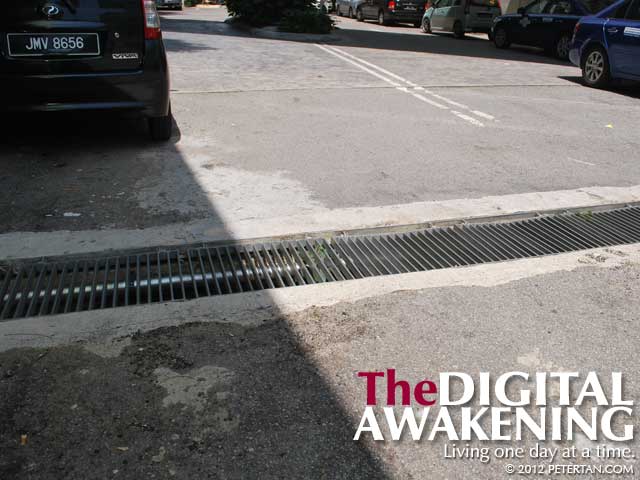
These drain grates that stretched across the road made it dangerous for wheelchair to go over as the gaps may trap the casters and throw the user off the chair.
It is such a shame for me to discover that the city I now call home is so inaccessible to disabled people. It is impossible to move around independently, conveniently and safely on the streets in a wheelchair. The sidewalks usually have poorly constructed ramps or even none at all. Despite all these barriers, I will attempt to explore more of the heritage areas together with Wuan and Rakan KL before these places are gone forever, swallowed up by cold glass towers and soulles concrete jungles.
